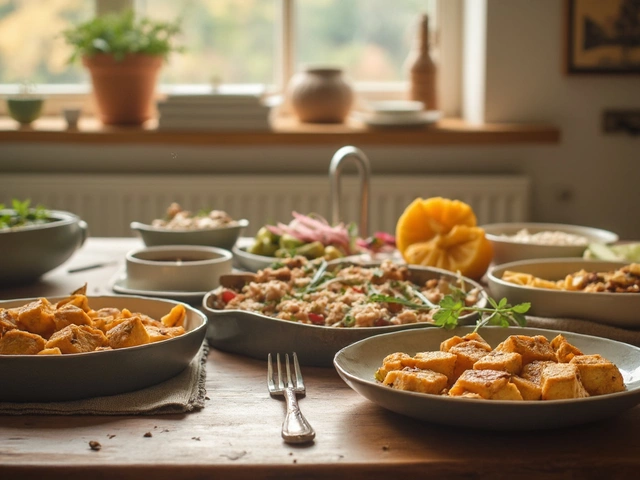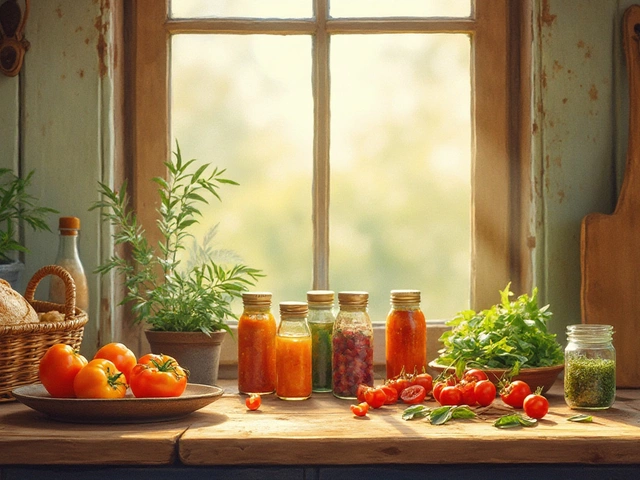Supermarkets love to trick us. You walk in with all the best intentions, eyes scanning labels featuring green leaves, earthy colors, and promises of protein or ‘superfood’ status. But here’s the shocker: many of the foods we trust as “healthy”—the ones we toss into our baskets with smug confidence—are actually spiking our sugar, stuffing us with sodium, and flooding our bodies with questionable additives. There’s a reason why that after-workout smoothie doesn’t quite leave you feeling as virtuous as promised. If you’re aiming to eat cleaner, beware: some foods wearing the ‘healthy’ halo are actually the *worst* for you. Let’s break down how that oat bar or yogurt pot isn’t always your friend.
The Rise of the ‘Health Halo’ Effect
Ever heard about the ‘health halo’ effect? Psychologists pin it as our tendency to overestimate the healthiness of foods marked with buzzwords like “organic,” “gluten-free,” or “low fat.” Walk into any Brighton Sainsbury’s and you’ll spot it right away: entire aisles dedicated to ‘guilt-free’ snacks, protein cookies, or low-sugar juices. Here’s the crazy part: a Cornell University study found people eating foods labeled as “low fat” consumed up to 50% more calories than those who didn’t see the label. Our brains get tricked—eat more because it’s “healthy.”
That health halo isn’t confined to the packaging. Think about smoothie bars boasting of “no added sugar”—it often means they’re packed instead with concentrated fruit juice, which is just sugar in disguise. The same sleight of hand happens with so-called “high protein” snacks, where the ‘protein’ boost comes paired with a list of fillers and sweeteners as long as your arm. Here’s a fun fact: a leading ‘protein’ granola bar in the UK contains more sugar per serving than a Mars bar. So when we think, “I must be smashing my nutrition goals,” we’re often miles off the mark.
And the health halo doesn’t just impact our waistlines; it affects our wallets, too. Food companies know we’ll pay more for something that looks healthy. Research from Nielsen in 2022 showed that Brits shelled out 30% more on “natural” snack brands—regardless of the actual ingredients inside. The halo’s a powerful marketing trick, and it’s why you see a basic bag of kale crisps costing as much as a steak.
Hidden Sugar: The Sweet Trap in Health Foods
You’d never think that ‘Greek yogurt’ or ‘oat cereal’ could rival dessert. But check the label next time you’re at the shop—it might just blow your mind. Many “healthy” breakfast staples sneak in way more sugar than you’d guess. Catch this: a single serving of vanilla-flavored Greek yogurt often packs 16-20 grams of sugar. That’s five teaspoons. Kellogg’s Raisin Wheats? A small bowl has about 9g of sugar, and most people fill the bowl well past the suggested serving. Even so-called ‘natural’ cereal bars get their sweetness from honey, agave, or fruit concentrates—different names, same blood sugar spike.
If you’re aiming for weight loss or just steady energy, that hidden sugar is the killer. Don’t be tricked by “all natural” or “no added sugars” claims. Many products simply use fruit juices, historically marketed as healthy. But juice—especially apple, grape, or orange—is basically liquid sugar without the fiber or nutrients you’d get from eating whole fruit. A Newcastle University review in 2021 found that fruit juice raised blood sugar almost as much as a can of cola.
This sugar sneakiness doesn’t end at breakfast. Many salad dressings, flavored waters, and meat substitutes use sugars for taste and texture. Check out this quick comparison in the table below:
| Food | Sugar (per serving) |
|---|---|
| Flavored Greek Yogurt | 16-20g |
| Bran Flakes (50g) | 11g |
| Granola Bar (popular brand, UK) | 13g |
| Bottled Fruit Smoothie (250ml) | 22g |
| Salad with balsamic dressing | 7g |
So, just because something hits that “healthy” branding, don’t stop checking the label. Pick plain yogurt and add berries for real sweetness, or swap out cereal bars for a handful of nuts. Your body—and blood sugar—will thank you.

The Dirty Truth About Processed Health Foods
Packaged “high protein” pancakes, gluten-free muffins, light crisps—these sound like better alternatives when you’re ducking into Tesco on lunch. But underneath, they pack the same junk you’d find in standard snacks, just with fancier marketing. Most contain highly processed flour (rice, tapioca, potato), which spikes blood sugar just as much as white bread. Then come the preservatives, gums, and emulsifiers: these help texture, not your health.
Let’s get specific. Protein balls, a staple in office snack drawers, look guilt-free and wholesome. Look closer and you’ll see dates, syrup, and sometimes more than 200 calories per small handful. The protein? Usually a pea or whey isolate—good in itself, but paired with high sweetener content and saturated fat from coconut oil. You’ll spike your energy, only to crash shortly after.
The same applies to vegan or plant-based convenience foods. Some brands, desperate to meet the rising demand for “meat-free” and “dairy-free,” churn out chicken-style nuggets or dairy alternatives stacked with additives—artificial flavors, stabilizers, and seed oils. A taste-test survey by Which? found that 8 in 10 vegan cheese slices contained over twice the sodium of real cheddar, and most had over 10 ingredients. If you’re aiming to eat plant-based for your health, swap out packaged items for real beans, lentils, veg, and nuts where possible. Baxter, my dog, would turn up his nose at a vegan sausage—he knows real food when he smells it.
Misleading Labels: Decoding the Tricks
Food labels are little minefields, especially in the so-called health section. Take “low fat” yogurts—strip the fat out, and you usually get added sugar, artificial sweeteners, and thickeners to replace flavor and creaminess. Or energy bars screaming “whole grain!”—but the grain’s often pulverized into flour, meaning it hits your bloodstream just like white toast.
There’s no magic to ‘natural’ either. UK law lets manufacturers label flavours as ‘natural’ even when they’re made using chemical processes and only a tiny percentage of the real thing. Then there’s “organic”—it might mean fewer pesticides, but organic biscuits are still… well… biscuits. Don’t treat them as ‘free food’ just because of the sticker.
One of the biggest sneaky claims? “No added sugar.” As discussed earlier, that nearly always means there’s still plenty of sweet stuff, just naturally occurring. If you spot anything ending in ‘-ose’ (glucose, fructose, dextrose), syrups, or juice concentrates, you’re still getting a sugar rush. And new trends like “ancient grains” or “superfoods” get thrown around liberally—while millet and quinoa have their perks, the packaging rarely reveals high sodium or preservatives inside these ready meals.
- Check the ingredient list before the nutrition panel—ingredients are listed by weight, so if sugar (or its friends) come first, walk away.
- Look for products with under five ingredients—simpler is usually better.
- Always compare serving sizes. Those numbers don’t mean much if your ‘bowl’ is three portions instead of one.
If you really want to know what’s lurking in your foods, smart shopping is less about chasing buzzwords and more about squinting at the tiny type. Or, just buy stuff Baxter would eat without a second thought—he’s not falling for “low fat peanut butter.”

Smart Tips to Stay Clear of Unhealthy ‘Healthy’ Foods
If you want the simplest answer to “What’s the unhealthiest healthy food?”—it’s almost always packaged or processed items riding the health trend wave. Sure, not everyone has time to make porridge from scratch daily, but there are little hacks that make dodging the worst traps easier.
- Stick to the basics as often as possible: real fruit, plain nuts, unsweetened dairy, oats, eggs.
- If you’re craving crunch, swap veggie crisps for air-popped popcorn or roasted chickpeas. These fill you up without a sodium bomb.
- Batch cook: roast trays of veg, make grain bowls, or prep high-fiber salads for snacking. This saves money and stops you reaching for processed “healthy” stuff in a rush.
- Get used to checking sugar content. Look for less than 5g sugar per 100g for yogurts and cereals.
- If something sounds too good—like “brownie, but healthy!”—it’s probably not as healthy as billed.
Unhealthiest healthy foods can trip up even smart eaters. Marketing tricks meet our tendency to relax around packaging that looks wholesome or trendy. But knowing what’s in your food—and sticking to real, straightforward ingredients—is the best way to eat well, save money, and feel actually energized after your snack. And don’t forget, the family dog might be a better judge of real food than half the ‘superfood’ brands out there. Baxter, after all, doesn’t care about “plant-based protein brownies”—he’d just rather chase the postman.








Write a comment